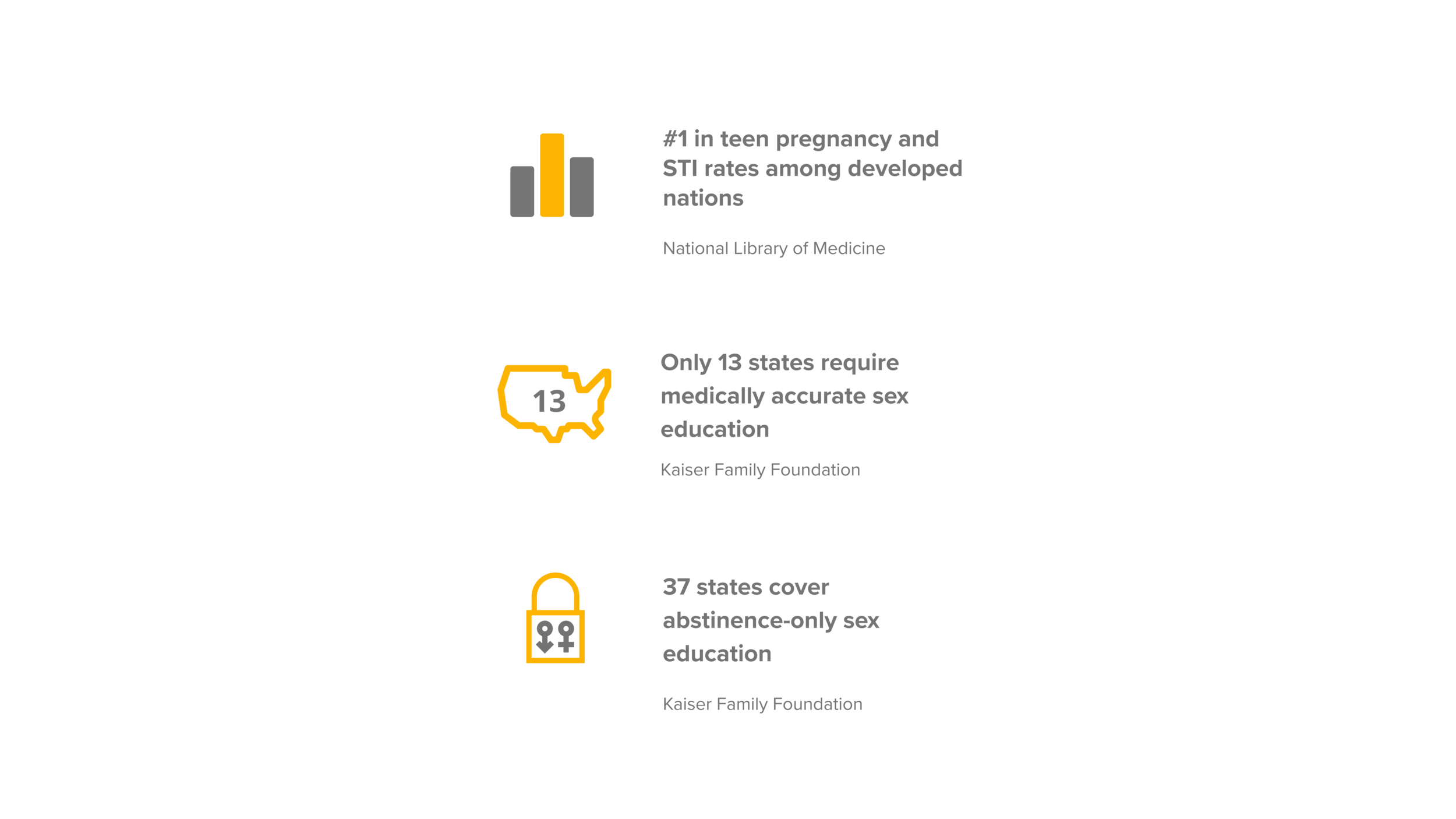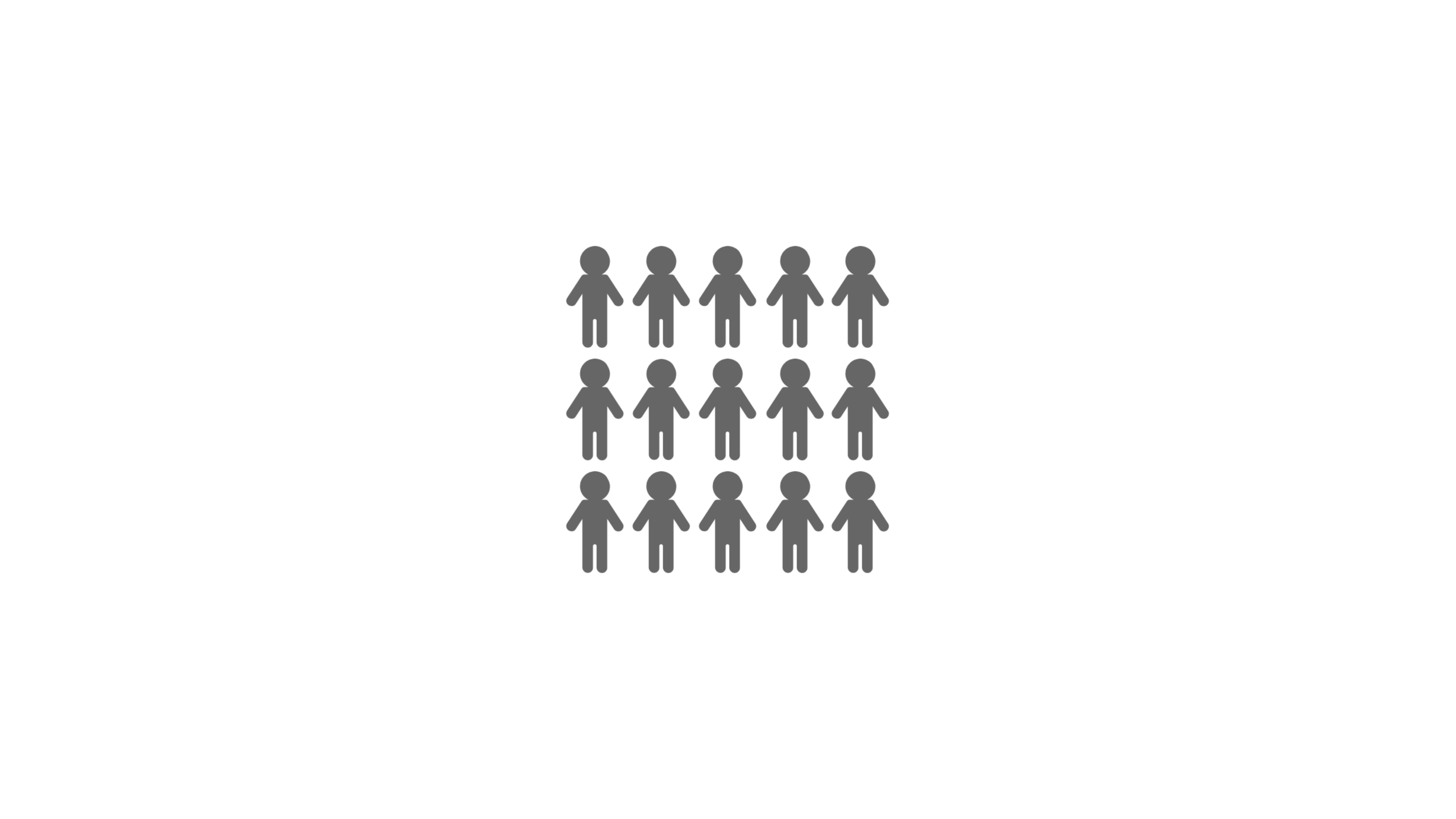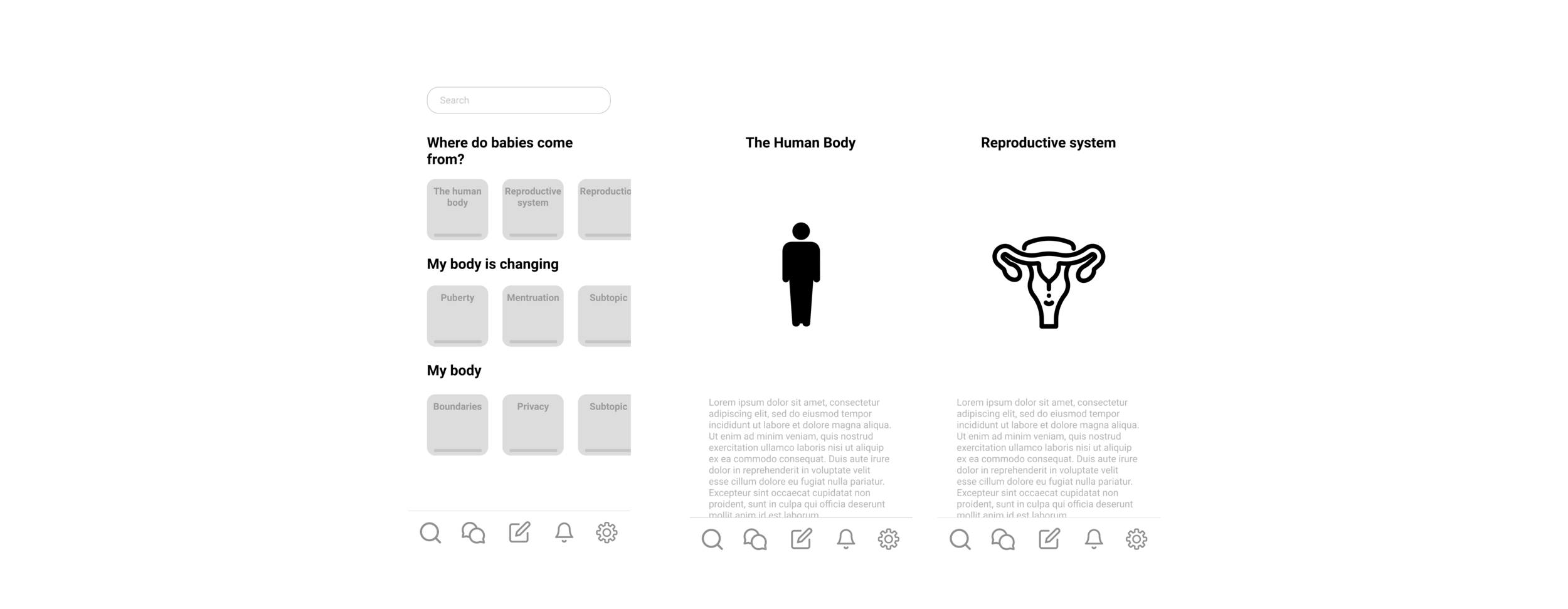Hoop | SexEd App for tweens and parents
I was one of the two experience designers working on this 3-week concept sprint during my time at California College of the Arts. I was responsible for design research, wireframing, UI and UX design.
We have won a CCA Sparks award with this project,
a business pitch competition at California College
of the Arts.
Project Summary
During conversation my teammate and I came to the realization that our experience with SexEd in our countries didn’t prepare us for the future, which launched us into researching SexEd in America. Unfortunately our findings showed us they were not doing any better, and that is where the idea for hoop was formed.
We challenged ourselves to create a platform that could facilitate conversations between parents and tweens about SexEd in a safe, medically correct way and without awkwardness.
We need to talk about sex.
Sexuality is integral to the human experience and it plays a
big role in one's identity, sense of self, physical health
and emotional health.
Because of that, Sex Ed is essential.
Parents report having a hard time approaching the
subject and end up delegating it to schools.
Sex Ed in the US schools is not doing any better at it.
So how are tweens learning about Sex Ed?
Most tweens go looking for answers online, which
can be dangerous, or they go to their friends who are
not equipped to discuss Sex Ed.
Although there is some safe educational material available
online and in print, they are not necessarily relevant
to tweens. It either looks too clinical and sterile or the
interaction fails to engage them.
We propose to offer medically accurate information
that is engaging and relevant to tweens.
Sex Ed stepped up.
Hoop will replace the Awkward in Sex Ed with Transparency, Truth and Togetherness. In order to do that, the app has two different sides to address the frustrations of both tweens and parents.
For tweens, Hoop offers the features Look, Learn and Link; and for parents Hoop offers Train, Track and Thrive.
For Tweens:
Tweens are able to look up engaging and medically
accurate Sex Ed content. The search button generates
results from the course content or forum responses.
Engaging short videos produced in partnership with
influencers present medically accurate and age appropriate
content. Tweens can track their progress in each subject
through the progress bar, and can earn badges after
completing each module.
We humanize Sex Ed by establishing an open dialogue.
Tweens can post questions that will be answered by a
verified health professional, which will then enable
comments by other tweens. All content will be moderated to
ensure it's safe and age-appropriate for tweens.
For Parents:
Parents can see their tween's progress in a concise
dashboard where they can access more detailed
analytics of what content is being accessed and
suggestions on how to start conversations
on the topics.
Parents reported feeling uneasy about approaching Sex Ed
with their kids, so Hoop offers support on how to approach
the subject, what to approach at each life stage and even
a space for parents to learn more about sex ed too.
Parents are also able to test their knowledge with their
tweens, which promotes parent-tween bonding, and
facilitates the Sex Ed conversation, making parents and
tweens more at ease around the Sex Ed topic.
Process
Research
To gather insight into the subject of Sex Ed, we interviewed several parents, kids and young adults who recently experienced Sex Ed in America. We also read articles about how Sex Ed can impact a person's life, different ways progressive schools have been approaching Sex Ed and many more. Lastly, we did a comprehensive competitive analysis to really understand where the gaps in Sex Ed were and how we could bridge them.
Market Opportunity
There are roughly 15 million tweens between the ages
of 8 and 12 in the US right now that fit into the current
app market.
There are another estimated 39 million kids under the age
of 8 in our prospective app market.
Identifying Needs
A theme as complex and comprehensive as Sex Ed required a careful study of which were the basic features we would need to include in the app. At first we thought a search service would be the solution to the problem, but as we interviewed more parents and tweens we understood that dialogue between the two was needed and we could promote that in our app.
We decided to clarify our mission and design features that could propel us towards that mission:
Replacing the AWKWARD in Sex Ed with TRANSPARENCY, TRUTH and TOGETHERNESS for tweens (8-12y/o) and parents
With this in mind, we designed features such as the search engine for both tweens and parents along with games and a forum. We also started thinking about other features to include in the future, such as a Terms of Respect and Responsibility for tweens when they access the forum.
In our first pass, we talked about how to display content in a visual way using illustrations and icons. We also talked about maintaining privacy through the use of avatars instead of pictures. Furthermore we discussed about how to make the forum safe with medically accurate information and prevent users from disseminating information that might be medically inaccurate.
Afterwards we developed the first screens and quickly learned from feedback that it was too text heavy, especially for younger children, and that we needed to humanize it more. At this point we learned that parents needed to be an active part of the conversation. With this knowledge, we went on to produce more screens and reached the iteration below, with short videos for content and fun badges for course completion on the kids’ side and added the parents side as well. In addition, we added a parents's side, which came with shared games and a report card style profile for their kids.
We followed a similar process for the forum. We understood that being able to have discussions was important if we wanted to create a more humanized experience, but at the same time we had concerns for safety and the dissemination of medically accurate information. The proposed solution was to only enable discussion once a question had been answered by a verified health professional, and always display the question-answer thread together with the professional's certification to ensure accuracy. Another feature we added was to only enable discussion once the question has been answered, so once a tween sends in a question, it is first answered by a health professional and only then can other tweens comment.






















